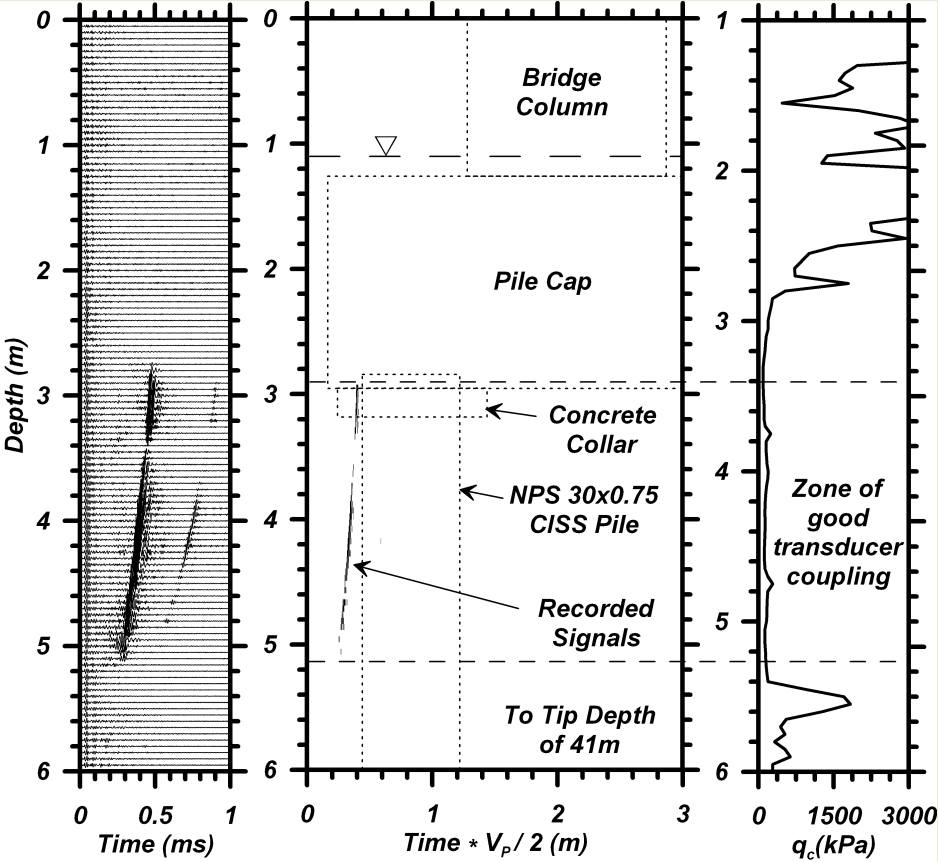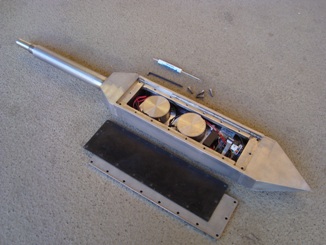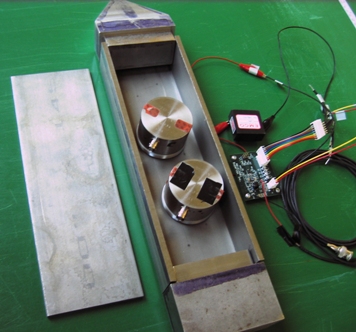Project Summary
Inadequate knowledge about the subsurface domain is among the biggest problems in geotechnical engineering. Unlike other fields where the materials used are well-constrained and man-made, geotechnical engineers must incorporate into their designs materials created by complex geologic processes of nature. These processes lead to a very wide range of material properties and geometries that must be characterized within a typical site. Current standard of practice site investigation techniques leave us with an incomplete understanding of site conditions that is often utterly inadequate. Medicine faced a similar challenge in the first half of the 20th century, wherein the properties of the inside of the human body could not be observed non-invasively. This problem was overcome by computer-assisted tomography that used inversion of x-rays to "see" inside the body without surgery.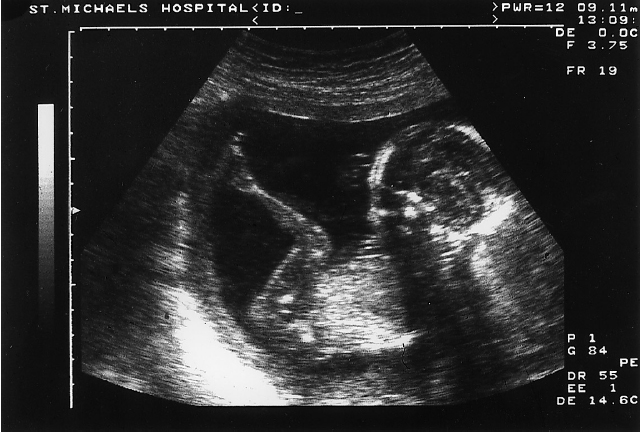 A number of additional non-invasive medical imaging techniques followed, including ultrasonic imaging, which utilizes reflections of compressive waves, or p-waves. P-wave reflection imaging is also utilized often by seismologists to image geologic structures sometimes kilometers below the earth's surface, and is useful for locating faults or geologic features that contain oil. Medical ultrasound and seismic reflection imaging utilize different tools (small handheld ultrasonic transducers versus explosives ignited on the ground surface) to construct images of vastly different scale, yet the underlying principle is identical: compressive waves reflect from anomalies and the recorded reflections can be used to non-invasively construct an image.
A number of additional non-invasive medical imaging techniques followed, including ultrasonic imaging, which utilizes reflections of compressive waves, or p-waves. P-wave reflection imaging is also utilized often by seismologists to image geologic structures sometimes kilometers below the earth's surface, and is useful for locating faults or geologic features that contain oil. Medical ultrasound and seismic reflection imaging utilize different tools (small handheld ultrasonic transducers versus explosives ignited on the ground surface) to construct images of vastly different scale, yet the underlying principle is identical: compressive waves reflect from anomalies and the recorded reflections can be used to non-invasively construct an image. 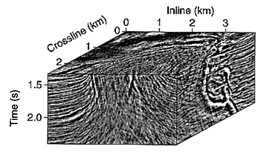 P-wave reflection imaging is a very mature field of study, with thousands of papers published in medical and geophysical journals and it has tremendous potential as a geotechnical site investigation tool. However, only a handful of studies have been conducted to demonstrate the potential of p-wave reflection imaging within the context of geotechnical engineering, and more research is necessary to facilitate adoption of this technology at the scale of a typical geotechnical project, or at the scale of soil models often used in research.
P-wave reflection imaging is a very mature field of study, with thousands of papers published in medical and geophysical journals and it has tremendous potential as a geotechnical site investigation tool. However, only a handful of studies have been conducted to demonstrate the potential of p-wave reflection imaging within the context of geotechnical engineering, and more research is necessary to facilitate adoption of this technology at the scale of a typical geotechnical project, or at the scale of soil models often used in research.
The ultimate goal of this research is to develop a system that will utilize p-wave reflection imaging for geotechnical projects, thus bridging the current gap that exists between very small scale ultrasounds and very large scale seismic reflection surveys. The research consists of application in the laboratory using ultrasonic transducers, and development of a cone-penetrometer based tool for application in the field to improve the ability of engineers to image vertical embedded objects such as jet grout columns and deep foundations.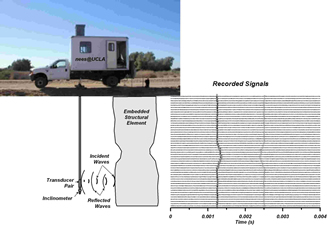 In the laboratory, two sets of ultrasonic transducers were tested (500 kHz and 100 kHz) to compare the corresponding spatial resolution and the amount of data processing necessary to generate useful reflection images of a soil model similar in scale to those often tested in large geotechnical centrifuges. The geometry of the model was made deliberately complex, with a dipping soil layer interface, high- and low-impedance embedded objects, and an undulating concrete base layer, to test the limits of the imaging system. The data generated from these transducers was analyzed and interpreted to provide geotechnical modelers with guidance on implementing a p-wave reflection imaging system (e.g., hardware components, data acquisition, data processing, etc.). The laboratory research using ultrasonic transducers has been completed, and current work is underway to build and test a cone-penetrometer tool utilizing the same 100 kHz transducers for use in the field. It is the hope that the laboratory component of this research will be directly useful for researchers conducting geotechnical model studies, and that the future field research will further improve subsurface site investigation at the geotechnical project level.
In the laboratory, two sets of ultrasonic transducers were tested (500 kHz and 100 kHz) to compare the corresponding spatial resolution and the amount of data processing necessary to generate useful reflection images of a soil model similar in scale to those often tested in large geotechnical centrifuges. The geometry of the model was made deliberately complex, with a dipping soil layer interface, high- and low-impedance embedded objects, and an undulating concrete base layer, to test the limits of the imaging system. The data generated from these transducers was analyzed and interpreted to provide geotechnical modelers with guidance on implementing a p-wave reflection imaging system (e.g., hardware components, data acquisition, data processing, etc.). The laboratory research using ultrasonic transducers has been completed, and current work is underway to build and test a cone-penetrometer tool utilizing the same 100 kHz transducers for use in the field. It is the hope that the laboratory component of this research will be directly useful for researchers conducting geotechnical model studies, and that the future field research will further improve subsurface site investigation at the geotechnical project level.
Publications
Coe, J.T. and Brandenberg, S.J. (201?). "CPT-based Ultrasonic Probe for P-wave Reflection Imaging of Embedded Objects." Journal of Bridge Engineering, ASCE, Accepted 10-12-2011 Link
Coe, J.T. and Brandenberg, S.J. (2011). "P-wave Reflection Imaging of a Cast-In-Steel-Shell Bridge Foundation" Geo-Frontiers 2011: Advances in Geotechnical Engineering, Proceedings of the Geo-Frontiers 2011 Conference, March 13–16, 2011 Dallas, TX. Link
Brandenberg, S.J. and Coe, J.T. (2010). "CPT-based ultrasonic probe for p-wave reflection imaging of embedded objects." UCLA SGEL 2010/01, University of California, Los Angeles. Final Project Report to Caltrans. Link
Coe, J. T. and Brandenberg, S.J. (2010). "P-wave reflection imaging of submerged soil models using ultrasound." J. Geotech. Geoenviron. Eng., ASCE, 136(10), 1358-1367. Link
Coe, J.T. and Brandenberg, S.J. (2010). Accepted for Publication. “P-wave Reflection Imaging of Laboratory Soil Models.” Proc. 5th Conf. Geotechnical Earthquake Engineering and Soil Dynamics, San Diego, CA, May 2010.


